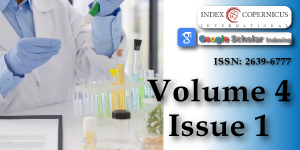Can the Wondfo® SARS-CoV-2 IgM/IgG antibodies be used as a rapid diagnostic test?
Main Article Content
Abstract
Background: An outbreak of novel coronavirus (SARS-CoV-2) disease (COVID-19) has rapidly spread worldwide. The aim of this study was to evaluate and validate the performance of the Wondfo® lateral-flow immunochromatographic assay that detect SARS-CoV-2- IgG, IgM antibodies (Wondfo® IC), using the results obtained by the fluorescence immunoassay test as reference diagnostic.
Material and methods: 97 serum specimens collected and analyzed by four independent laboratories of Sergipe/Brazil was used for validated the Wondfo® SARS-CoV-2 IgM/IgG antibodies test. The COVID-19 positive serum specimens were determined by fluorescence immunoassay technique, used as reference standard.
Results: An overall of 97 serum specimens show 39 (39/97) SARS-CoV-2 IgG positive specimens, 33 (33/97) SARS-CoV-2 IgM positive specimen and 25 non-reagent specimens (25/97). However, the Wondfo® IC assay detected only 9 (9/97) IgM/IgG positive specimen and 25 (25/97) no-reagent specimen. A weak correlation was found between the outcomes of the Wondfo® IC assay and fluorescence test. The accuracy between the two tests was 32.08%. The sensitivity, specificity, positive predictive value, and negative predictive value of Wondfo® IC assay were of 11.12%, 100%, 100% and 25.27%, respectively. Moreover, no false positive sample was determinate, whereas 88.89% of false negative results were found.
Conclusion: The Wondfo® IC test failed in providing a quick, valid, and reliable results and appears not to be a good alternative for clinical use in detecting pandemic coronavirus. However, if the limitations of the rapid test are known, some correction factors can be used in order to adjust the epidemiological data.
Article Details
Copyright (c) 2020 Borges LP, et al.

This work is licensed under a Creative Commons Attribution 4.0 International License.
Huang C, Wang Y, Li X, Ren L, Zhao J, et al. Clinical features of patients infected with 2019 novel coronavirus in Wuhan, China. Lancet. 2020; 395: 497–506.
WHO. WHO Coronavirus disease 2019 (COVID-19): situation report, accessed may18, 2020. https://www.who.int/emergencies/diseases/novel-coronavirus
Jin Y, Yang H, Ji W, Wu W, Chen S, et al. Virology, Epidemiology, Pathogenesis, and Control of COVID-19. Viruses. 2020; 27: 12: 372. PubMed: https://pubmed.ncbi.nlm.nih.gov/32230900/
Ahn DG, Shin HJ, Kim MH, Lee S, Kim HS, et al. Current Status of Epidemiology, Diagnosis, Therapeutics, and Vaccines for Novel Coronavirus Disease 2019 (COVID-19). J Microbiol Biotechnol. 2020; 30: 313–324. PubMed: https://pubmed.ncbi.nlm.nih.gov/32238757/
Vashist SK. In Vitro Diagnostic Assays for COVID-19: Recent Advances and Emerging Trends. Diagnostics (Basel). 2020; 10: 202. PubMed: https://pubmed.ncbi.nlm.nih.gov/32260471/
Loeffelholz MJ, Tang Y-W. Laboratory diagnosis of emerging human coronavirus infections - the state of the art. Emerg Microbes Infect. 2020; 9: 747–756. PubMed: https://pubmed.ncbi.nlm.nih.gov/32196430/
Tang YW, Schmitz JE, Persing DH, Stratton CW. The Laboratory Diagnosis of COVID-19 Infection: Current Issues and Challenges. J Clin Microbiol. 2020; 58: 512-520. PubMed: https://pubmed.ncbi.nlm.nih.gov/32245835/
Pan Y, Li X, Yang G, Fan J, Tang Y, et al. Serological immunochromatographic approach in diagnosis with SARS-CoV-2 infected COVID-19 patients. J Infect. 2020; 81: 28-32. PubMed: https://pubmed.ncbi.nlm.nih.gov/32283141/
Montesinos I, Gruson D, Kabamba B, Dahma H, Van den Wijngaert S, et al. Evaluation of two automated and three rapid lateral flow immunoassays for the detection of anti-SARS-CoV-2 antibodies. J Clin Virol. 2020; 128: 104413. PubMed: https://www.ncbi.nlm.nih.gov/pmc/articles/PMC7198434/
Venter M, Richter K. Towards effective diagnostic assays for COVID-19: a review. J Clin Pathol. 2020; 73: 370-377. PubMed: https://pubmed.ncbi.nlm.nih.gov/32404473/
Demey B, Daher N, François C, Lanoix JP, Duverlie G, et al. Dynamic profile for the detection of anti-SARS-CoV-2 antibodies using four immunochromatographic assays. J Infect. 2020; PubMed: https://www.ncbi.nlm.nih.gov/pmc/articles/PMC7204722/
Vásárhelyi B, Kristóf K, Ostorházi E, Szabó D, Prohászka Z, et al. The diagnostic value of rapid anti IgM and IgG detecting tests in the identification of patients with SARS CoV-2 virus infection. Orv Hetil. 2020; 161: 807–812. PubMed: https://pubmed.ncbi.nlm.nih.gov/32364358/
Chen G, Wu D, Guo W, Cao Y, Huang D, et al. Clinical and immunological features of severe and moderate coronavirus disease 2019. J Clin Invest. 2020; 130: 2620–2629. PubMed: https://pubmed.ncbi.nlm.nih.gov/32217835/
Vardhana SA, Wolchok JD. The many faces of the anti-COVID immune response. J Exp Med. 2020; 217: 20200678. PubMed: https://www.ncbi.nlm.nih.gov/pmc/articles/PMC7191310/
Imai K, Tabata S, Ikeda M, Noguchi S, Kitagawa Y, et al. Clinical evaluation of an immunochromatographic IgM/IgG antibody assay and chest computed tomography for the diagnosis of COVID-19. J Clin Virol. 2020; 128: 104393. PubMed: https://pubmed.ncbi.nlm.nih.gov/32387968/
Cassaniti I, Novazzi F, Giardina F, Salinaro F, Sachs M, et al. Members of the San Matteo Pavia COVID-19 Task Force. Performance of VivaDiag COVID-19 IgM/IgG Rapid Test is inadequate for diagnosis of COVID-19 in acute patients referring to emergency room department. J Med Virol. 2020; 10. PubMed: https://pubmed.ncbi.nlm.nih.gov/32227490/

